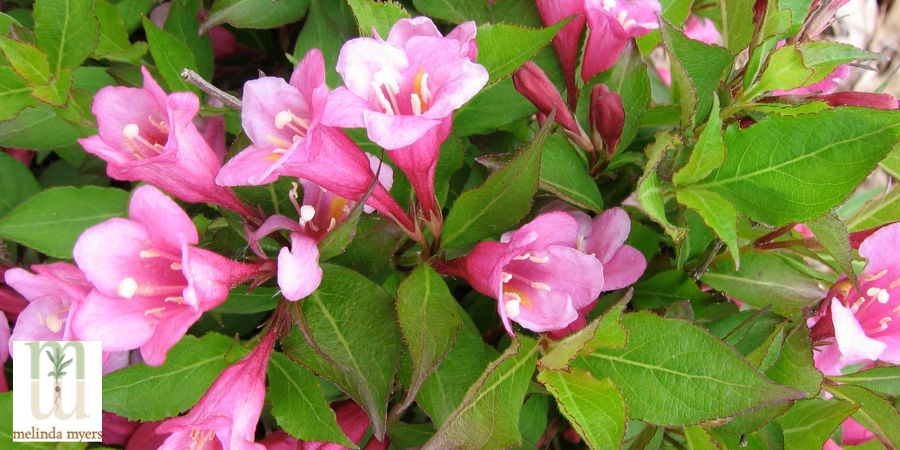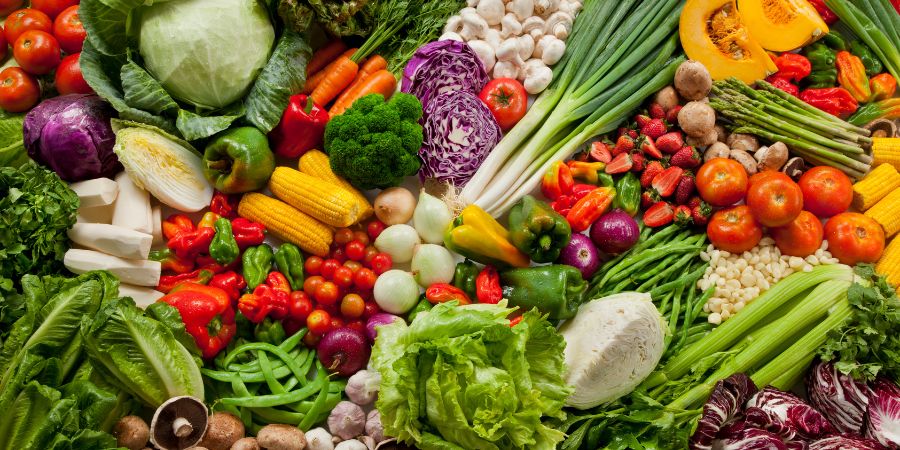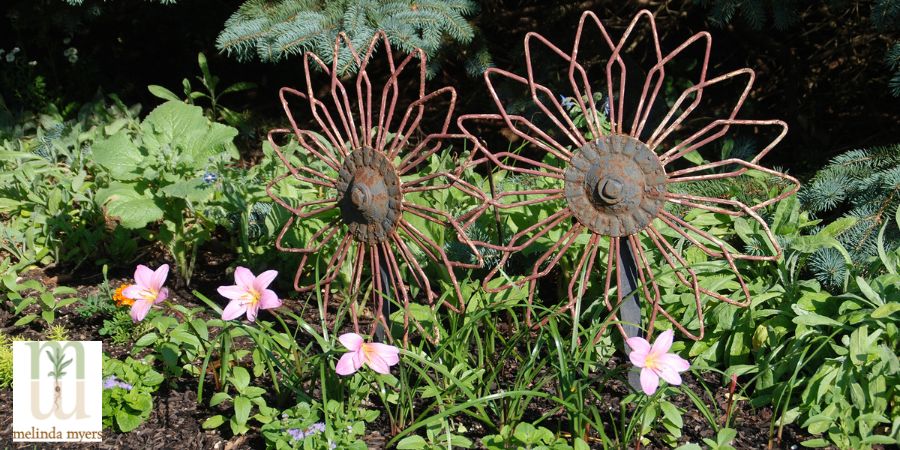Gardening on a Budget
- horticulturist and gardening expertMarch 4, 2023
Gardeners are some of the most creative people I know. For many of us, that includes making the most of every dollar spent on gardening. Plus many of these money saving strategies are also good for the environment. Here are just a few ways to maximize your budget in your garden and landscape.
Start a Garden on A Budget
If you are new to gardening or tackling your first landscape the budget and workload can seem overwhelming. Fortunately gardeners love to share ideas, plants, seeds and more.
Don’t be afraid to ask for advice and help as you get started. We all like to share what we know and enjoy doing. You may be surprised to find many people you know have started gardens, planned landscapes and will be happy to share tips for helping you get started.
These same gardeners may have extra tools to lend or even give to you. We gardeners love to share our passion, and that includes tools to help new gardeners be successful and keep gardening.
Most gardeners have extra seeds. Seed packets usually contain more seeds than needed for that year’s garden. We can’t just throw them away and so the collection of half-open seed packets accumulates. By sharing these seeds, we help others and have a good excuse to buy something new.
Many gardeners who start their own transplants from seed end up with more plants than they have space to grow them. They find themselves scrambling to find someone willing to adopt them for their own gardens and containers.
Visit the pot recycling area at your local garden center. Many garden centers have a space for gardeners to drop off pots that once held trees, shrubs and perennials. You can pick these up and take them home for free. Just do a bit of cleaning, add some paint and you’ve turned these into attractive planters.
Barter with friends and family for help preparing, planting and caring for your garden or landscape. Perhaps you’re a wonderful cook or baker and you can trade meals and treats for some gardening help. Or maybe you have a friend who loves to garden but doesn’t have outdoor space to create their own. Repay them for their help with a portion of the harvest, bouquets of flowers, or time to relax and enjoy the beauty you created together.
Cheapest Plants to Grow
Look at more than the price tag when purchasing plants. Discounted plants are not always the bargain they appear. These plants are often marked down when they are on the decline. Inspect plants, especially those discounted specials, for brown leaf edges, spots, dead stems and more evidence of drought stress, insect problems or disease. Why spend money on problems that may require extra work to bring them back to health or watch them struggle and die. You not only lost the initial cash investment but also time needed to grow a beautiful tree or shrub.

Weigela-florida-'Minuet' Perennial
Instead, buy smaller size healthy plants that cost less. They adjust more quickly to their new home than their larger counterparts. In several years they will catch up with the larger transplants and you’ll have fun watching that small plant grow into its mature size.
Look for old-time favorites that tend to be cheaper and sold in larger quantities. This allows you to fill the garden with pretty plants for less money. Then buy a couple of new introductions or unique plants to serve as focal points if the budget allows. You’ll add a bit of pizzazz to the garden or container for much less money.
Consider investing in a few trees, shrubs and perennial flowers that provide years of beauty. The initial investment is usually more than annual plants but it is not a reoccurring expense.
Select plants with multiple seasons of interest to save money. This includes trees, shrubs and perennials. You’ll need fewer plants to provide year-round beauty. Look for those with flowers, edible and ornamental fruit, fall color and winter interest. Add a few plants for you, birds and the pollinators to enjoy. Songbirds eat a variety of insect pests and pollinators help boost your garden’s productivity. Birds and butterflies provide motion and color to the garden and watching them and the bees visiting individual flowers helps us slow down and enjoy the outdoors.
Look for the most pest-resistant varieties suited to your growing conditions and garden design. You’ll save time and money needed to manage pests, staking floppy plants and deadheading faded flowers.
Start some plants like marigolds and zinnias from seeds right in the garden. You can do the same with perennials. It just takes two years for most perennials to start flowering when planted as seeds in the garden. You will save money since a packet of seeds produces multiple plants making the cost per plant much less.
Allow self-seeding annuals like alyssum, nicotiana, calendulas and cosmos to return each year. Just delay spring cleanup until these have a chance to sprout. Move surplus seedlings to other gardens as needed.
Team up with gardening friends to save money on seeds, soil and other items by buying them in bulk. Share a packet of seeds. Most contain more seeds than one gardener needs. Buy flowers and vegetables in 6 packs or flats that contain 18, 36 or more plants. The cost per plant will be much less when buying them this way.
Plant trees and shrubs at the recommended spacing. This ensures sufficient room for them to reach their mature size. Fill the voids with annuals and perennials. Each year you’ll need fewer annuals and those perennials can easily be moved to a new garden.
Cheapest Vegetables to Grow
When buying vegetable seeds and plants, focus on those that help reduce your food budget. Grow vegetables that are more expensive to purchase at the grocery store or provide a large harvest for the available space. Tomatoes, greens, and sweet peppers are a few favorites to consider. A single tomato plant can produce an average of 8 pounds or more per plant.

Make sure that what you grow will be eaten. A cheap plant doesn’t save you money if no one eats it. I love the beauty and flavor of okra, but my family does not. Anytime I tried to sneak it into a recipe, I would find a pile of okra on the edge of their plates. Now I enjoy the hibiscus-like flowers and pods in the garden and arrangements.
Just like your flowers, start some of your vegetables from seeds right in the garden. Cucumbers, beans, peas, carrots, beets, radishes, squash and melons are a few to try. Just check the back of the seed packet for tips on when and how to plant.
Some plants like tomatoes, peppers and eggplants require a longer season to begin producing than some of us have. You can start them from seeds indoors or try the less labor intense winter sowing method. This technique just repurposes gallon milk jugs into mini greenhouses allowing you to start seeds outdoors. No lights or daily watering is required. Or buy and share a 4 or 6-pack of transplants with a fellow gardener. You both save money when you split the cost and have transplants ready for the garden.
Select the most insect and disease-resistant varieties. You will spend less time and possibly money managing pests and have a larger harvest to enjoy.
A Few More Cheap but Smart Gardening Tips
Take care of your investment. Proper watering is critical for the health and longevity of your plants. Water plants thoroughly and as needed. New plantings will need more frequent watering as they develop a robust root system. Gradually reduce the time between watering to encourage deep drought-tolerant roots. Mulch the soil to conserve moisture, suppress weeds and improve the soil as organic mulches decompose.
Fertilize with low nitrogen slow-release Milorganite. It encourages balanced above- and below-ground growth that is more drought-tolerant and resistant to insects and diseases. As the microorganisms work on releasing the nutrients from the pellets, some of the phosphorous and potassium bound to the soil is made available to the plants. The phosphorous help with rooting, flowering and fruiting, while the potassium helps with hardiness and disease resistance. Plus, it contains 85% organic matter that helps feed and improve the soil as well as your plants. You and your plants will reap a load of benefits from this one fertilizer.
Don’t haul leaves, evergreen needles and other garden trimmings to the city recycling center. Instead, put this free resource to work in the garden. Leaves and evergreen needles make excellent mulches. Just spread a one-inch layer over the soil surface around your plants and pulled away from tree trunks and plant stems. Organic mulches like these conserve moisture so you will water less, help suppress weeds and improve the soil as they decompose. Or bag fall leaves and save them for next year's garden.

Start a compost pile to transform disease- and insect-free plant trimmings into a valuable soil amendment you won’t have to buy. Create a bin from discarded pallets or fencing to contain the pile if desired. With time and a bit of effort, you can turn landscape trimmings into a soil amendment for the garden and containers.
Convert tree and shrub trimmings into wattle fences, arbors and trellises. Or team up with neighbors and rent a chipper to convert these trimmings into mulch. You share the rental cost and no one has to maintain and store the equipment.
The more seasons you garden, the more seeds you seem to collect. You are not alone. Organize a seed swap with friends and family. Have everyone bring extra seeds or those saved from your heirloom and native plants to share and exchange with others. It’s a great way to save money and share memories.
Capture rainwater in rain barrels to use for watering ornamental plantings and containers. Check with your municipality first. A few areas prohibit rain harvesting, but many offer rebates or other incentives for those that prevent rainwater from running into the storm sewer.
Find a second life in the garden for items headed to the recycling center. Convert thrift store and yard sale finds into creative containers, trellises and garden art. Use fast food containers, yogurt cups and other recycled items to start plants from seeds. Or make your own biodegradable pots from newspapers.
Don’t stop as the growing season begins to wind down. Purchase healthy plants and garden supplies at the end of the season. These are often discounted, helping to stretch your garden budget.
Always call 811 at least three business days before digging in. This free service contacts all underground utility companies who will mark the location of their services in your work area. Avoiding underground utilities while working in the yard can help reduce the risk of injury, inconvenience and money you will have to spend repairing the damage you cause if they are not contacted. I would much rather spend my money on plants than repairing a utility I accidentally damaged.
So check your budget and get busy planning for the best, most productive and beautiful garden, no matter the size of your budget.

